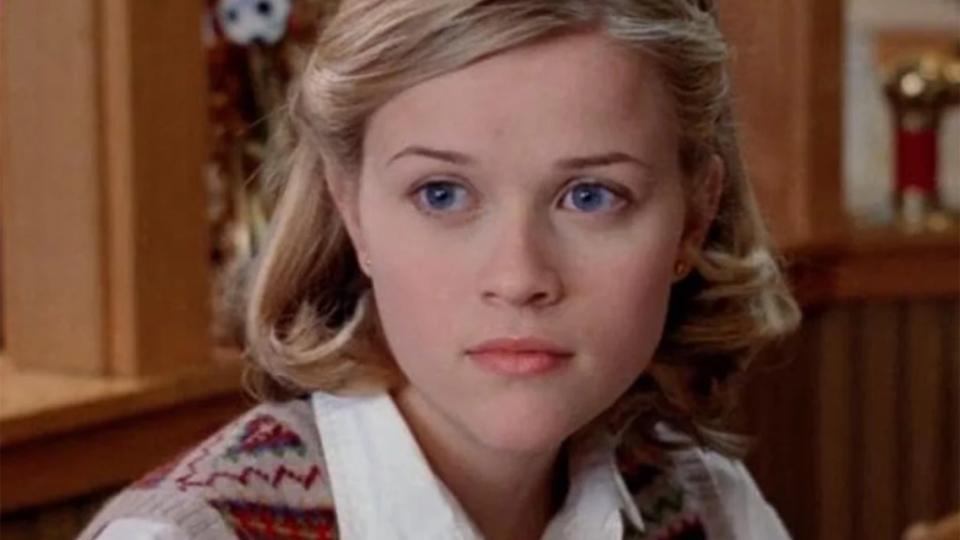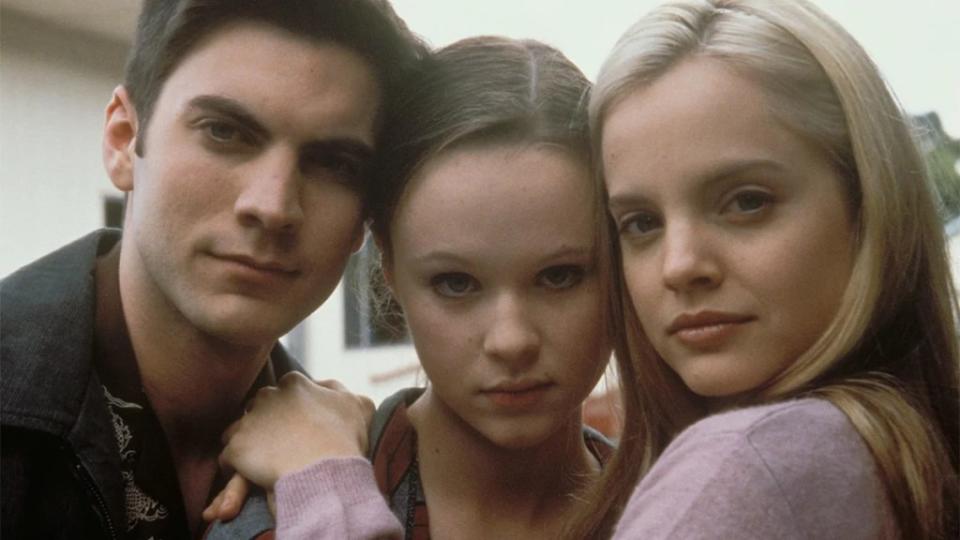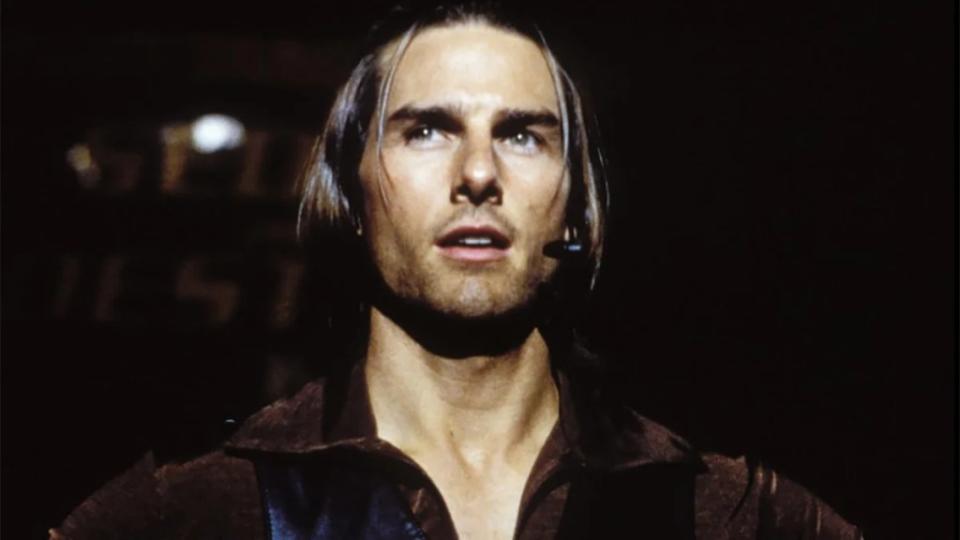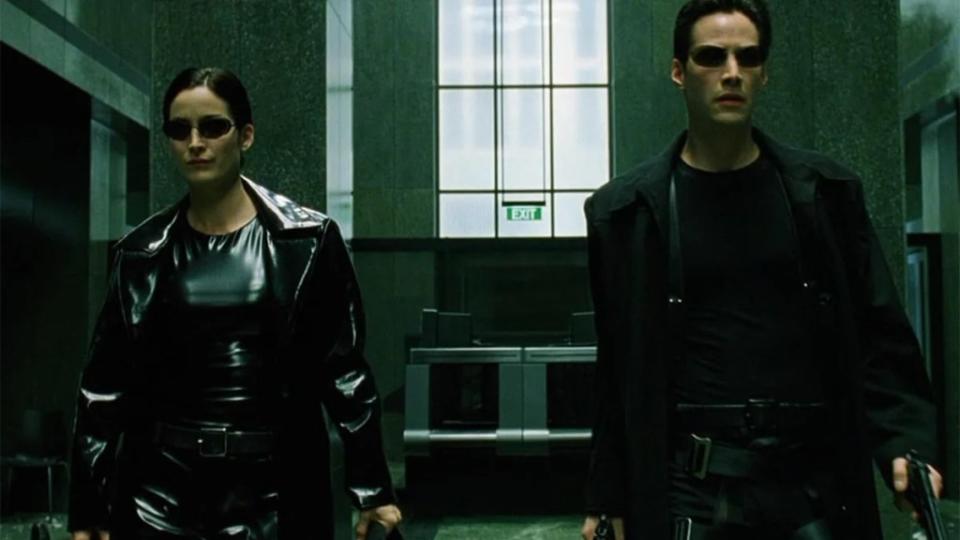The Year of the Teen: How the Risk Takers of 1999 Reflected a Changing Youth Landscape
- Oops!Something went wrong.Please try again later.
- Oops!Something went wrong.Please try again later.
- Oops!Something went wrong.Please try again later.
- Oops!Something went wrong.Please try again later.
Teens were a top priority in 1999, at least from a pop culture perspective. The cohort, which included the tail end of Generation X and the early millennials — the last to know a world before and after the Internet — had come to be big business in the last few years on both the big and small screen, driving hits like “Felicity” and “Dawson’s Creek,” and (“Titanic”), but it reached its apotheosis in the year before the new millennium.
The U.S. domestic box office in 1999, according to Box Office Mojo, saw films like “Star Wars: Episode 1 — The Phantom Menace” top the charts with $431,088,295; with “The Matrix” ($171,479,930); and “The Blair Witch Project” ($140,539,099) rounding out the top 10.
But the crossover appeal to the teen market didn’t live exclusively in sci-fi, horror or comedy. Serious filmmaking by auteur directors and writers with daring new perspectives would dominate the latter half of the year, specifically “American Beauty,” “Election” and the sex comedy “American Pie” also courted teen audiences and are now synonymous with the youth market.
With audiences now 25 years removed from 1999, TheWrap decided to look back at what many consider to be the last great year in movies. The handful of industry players who spoke to TheWrap saw 1999 as a year of intense innovation in filmmaking, where executives and creatives were willing and, more importantly, open to taking risks. And when it came to catering to a youth market with a mess of disposable income, it was a fantastic year to be a kid — or a teen — at the movies.
Though demographic records for teen audiences in 1999 aren’t available, the teen market became highly attractive to Hollywood. A 2000 study of teen spending from the Monthly Labor Review found that in 1999 teens spent $105 billion of their own money and “influenced $48 billion in family spending.” A Consumer Expenditure Survey from the years 1997-1998 of 2,552 teens showed that 6.2% of their income went to entertainment. By 2005, teen spending had grown into a $159 billion industry (driven partly by more teens having credit cards), according to CQ Researcher. And by 2015 teen movie attendance had reached its highest per-capita attendance of 7.3, a study by the MPAA revealed.

A key proponent of the teen market was MTV Films, producers of the Alexander Payne-satirical comedy “Election.” It seemed like a no-brainer for the TV network to craft a film company in 1995, as the music-centric television station had come to define youth culture since its inception in 1981.
“When we were asked to start a film division, I felt strongly that while an occasional franchise property like ‘Beavis and Butthead’ or ‘Jackass’ can be a movie, we really wanted to break the mold a little bit,” said David Gale, “Election” producer and head of MTV Films at the time. “When we started looking for films we wanted to be the anti-studio film division on the Paramount lot.”
The company’s mandate was to look for movies that represented youth-driven culture or pinpoint trends that felt unique and personal for the audience they were serving. MTV’s content also had to be different from what was on television, so a theatrical component emphasized to audiences that these weren’t just TV shows on a bigger screen. Gale searched for films that weren’t typical teen fare and was approached by Albert Berger and Ron Yerxa with the script for “Election.” Based on a Tom Perrotta short story, the book and movie follow a high school presidential election. For Gale, it felt subversive and different.
We wanted to be the anti-studio film division on the Paramount lot.
David Gale, former head of MTV Films
“Election,” the novel, was an allegory of life under President Ronald Reagan, while the film focuses on 1990s politicians like Ross Perot. The film, at the time, was a refreshing look at the politics of the era. To audiences today, the dirty pool politics of its iconic character Tracy Flick (Reese Witherspoon) feels almost quaint compared to our politically divided times.
“I didn’t really overthink things back then, because that really wasn’t the way you did things at MTV,” Gale said. “You were meant to look at things that just caught your eye.”
The auteur ethos
Another movie that ended up appealing to a teen fanbase in spite of being an R-rated drama was “Fight Club.” The David Fincher-directed feature would not have been made without producer and Fox 2000 Pictures President Laura Ziskin. “She was the executive who championed that and championed a lot of tough movies,” said Brian Raftery, author of “Best. Movie. Year. Ever: How 1999 Blew Up the Big Screen.” (Ziskin, who died in 2011, also was a producer of “Pretty Woman” and the “Spider-Man” franchise.)
Other executives fought for the auteur ethos at multiple studios, as Sharon Waxman explained in “Rebels on the Backlot,” including Lorenzo di Bonaventura, president of worldwide production at Warner Bros. and Mike De Luca, president of production at New Line. It was DreamWorks executive Glenn Williamson, then-President of DreamWorks Bob Cooper and DreamWorks co-founder Steven Spielberg who helped get “American Beauty” over the finish line.

The combination of Spielberg and DreamWorks was the secret to success, according to Cooper. “It would never have been made without [Spielberg],” he said. “And I don’t mean because of his name only or because he liked the script.” Spielberg allowed director Sam Mendes, making his feature film debut, the freedom to make mistakes and learn from Spielberg himself. DreamWorks also gave the production as much rope as it could. “My experience at DreamWorks was a great, and I really mean great, willingness to take risk. To go against convention,” said Cooper.
These executives weren’t afraid of the relative inexperience of the directors they were working with. Darren Aronofsky directed his breakthrough feature “Pi” in 1998 at age 29 and made his startling “Requiem for a Dream” in 2000 at 31. For Sam Mendes, “American Beauty” was his first feature; “Election” director Alexander Payne was making his third.

The filmmakers of this period were mostly self-taught, learning the tools of the trade from watching the works of auteurs of the 1970s. “Magnolia” director Paul Thomas Anderson dropped out of NYU Film School after a few days figuring “he had nothing to learn from the process,” Waxman wrote in her book. No doubt these stories inspired a cadre of young film lovers already disaffected by the conformity of high school and college.
Meanwhile, the studios were in a creative doldrums, watching indie hits like “Pulp Fiction” and “Good Will Hunting” suck up all the cultural attention.
After “sputtering a bit” in the mid-to late-1990s, “the studios were a little desperate and they saw all these kids, because they were much younger, making these out there, interesting, provocative movies that did okay in theaters and then had a huge life on video,” said Raftery.
Part of this is connected with what Irving Belateche, a cinema professor at USC, calls “the baby boom echo.” “In the ’90s, especially towards the late ’90s, there was this demographic bubble,” he said. The directors crafting these films were themselves the children of baby boomers as well as the audience they were reaching. “They were teenagers just finishing off their teen years in the 1990s.”
But as Waxman explained, the rebels of the era “did not submit peacefully to the studio process.” Films like “Being John Malkovich,” “Election” and “American Beauty” didn’t gestate in the studio’s development pipeline, wherein pitches are bought and then turned into scripts. In many cases, directors and producers like Gale, with “American Beauty,” came to studios with completed scripts, hoping for a champion like DreamWorks’ Cooper.
As “American Beauty” producer Dan Jinks explained, the team at DreamWorks — still a company finding itself — felt the movie wouldn’t sell internationally, that it would only play well in the big cities like San Francisco, and that it wouldn’t cater to teen audiences. Neither ended up being true.
And the films that were hits did not respond to the studio marketing machine either. “‘Boogie Nights’ would be a dismal failure, market research predicted,” wrote Waxman. “Research audiences never got [David O.] Russell’s ‘Three Kings’ or the Wachowski’s ‘The Matrix.’”

The profit motive
The desire to make money wasn’t the sole objective for DreamWorks and MTV Films. “We were looking for [unique] voices,” said Gale. “Those could be filmmaking voices, screenplays, the material that was as close to the cultural zeitgeist or could help create a cultural zeitgeist, and not just a box office success, though, of course, that always felt good.”
After 1999, these movies turned into television shows with series like “Dawson’s Creek” and “Buffy the Vampire Slayer.” Teen dramas today dominate the small screen while the movies that still get made end up on streaming services like Netflix.
Jinks doubts “American Beauty” would be made in today’s studio system. “If a giant filmmaker wanted to make it at a streaming service with two huge stars that’s the only way something like that seems to get made now,” he said.
Today’s executives should be empowered to take risks and focus on entertaining stories, to return to their love of movies when picking their projects, Raftery said. Executives at studios in the late 1990s who were in their late 30s and early 40s watched “L.A. Confidential” or “Sex, Lies and Videotape” and became inspired. “They’re like, ‘That’s why I want to make movies,’” he said.
Raftery is optimistic that the youth could bring back another Golden Era equivalent to 1999, especially with so many people (including celebrities) sharing their opinions on movies, new and old, via Letterboxd, a movie-centric social media platform. “Letterboxd really has turned film-going for young people into something that they get excited about,” he said. “I see it at repertory screenings out here. I see people who are way too young to be seeing the movies that I’m going to see. I’m like, ‘Why are you watching ‘The Long Goodbye’ with Elliott Gould?’”
As Gale put it: “It was [a] golden age of movies, and it became a golden age of youth movies that does not exist anymore at all.”
The post The Year of the Teen: How the Risk Takers of 1999 Reflected a Changing Youth Landscape appeared first on TheWrap.

